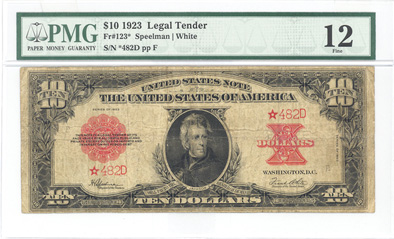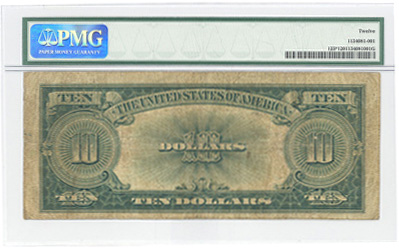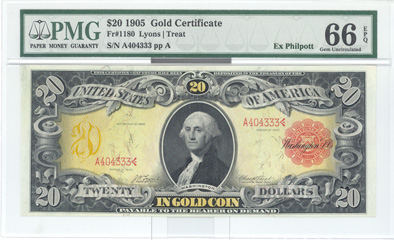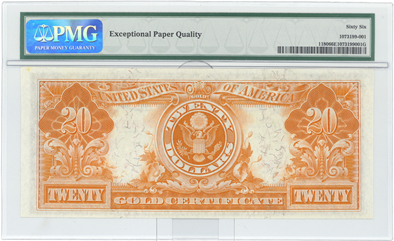Currency Favorites
Posted on 3/29/2011
As a grader for PMG, I enjoy the tremendous benefit of seeing some of the world’s greatest notes everyday. I review notes from all over the world and have been able to view more notes than most people encounter in their entire lives. With the assortment of notes we see, I thought I would share some of my favorites.
My favorite type of currency is Confederate currency. This is because when I was 15, my step-father gave me a $5 Confederate note for my birthday. I immediately thought the note was play money, but after explanation I learned what it was, sparking my interest. I liked the artwork and size of the note. It was very different from what I knew paper money to look like. Up to that point, I assumed all currency was small like the notes we use today, so I immediately became interested.
I now know that each note comes with a story. My step-father went on to tell me that the notes contained counterfeit varieties, which I found to be remarkable and have ever since. I had many questions about how and why there were fake notes and this is where my initial curiosity in US history and currency came from.
From that interest I went on to study history in college and found my way back into the hobby by becoming a grader with PMG. Since then, I have been blessed to see some of the most beautiful notes from the United States and around the world. Of US currency, my favorite remains the $10 1923 Legal Tender “Poker Chip” note. I like the back design which gives the note its great nickname as each “10” looks like it is in a poker chip. In addition, I studied Andrew Jackson in college, and with this note displaying his portrait I immediately became a big fan. Unfortunately, I do not own one but hope to someday.
Another US note I am fond of is the $20 1905 Gold Certificate “Technicolor” note. The nickname comes from the color contrast of the gold print and the red seal. I have always found this to be very attractive. The color sets the note apart from all the other gold certificates in my opinion as no other gold certificate possesses the red like in the 1905 series. Another attractive US type is the “Rainbow” series of 1869. The heavy amount of blue fibers combined with the other colors used in printing give these notes their nickname and really are true pieces of art. Both of these notes have great color and are wonderful examples of the beauty our currency once displayed. While more visually appealing, it was not economical to continue producing currency in this fashion. Even though the BEP is making steps to produce more visually appealing notes, one can see why these types are much more collectible compared to the currency we see today.
World currency is produced in an artistic fashion and holds a strong visual appeal as well. Many world notes use several colors giving them a fine, colorful appearance. Also, several world notes have animals or historical figures pictured which also gives the note a pleasant look. Polymer notes are a particular type of world currency that possesses many colors and artistic variations. They also have a distinct feel which I find interesting. To read more abut polymer notes, read this article from a previous newsletter.
These are just a few of my favorites that I have been fortunate enough to encounter. As you can see, I tend to like notes that are more visually appealing. Currency is an amazing thing that carries value for several different reasons. What types of currency are important to you and what interests you the most about it? Feel free to share any questions or comments on our chat boards via our website – www.PMGnotes.com.
Stay Informed
Want news like this delivered to your inbox once a month? Subscribe to the free PMG eNewsletter today!



